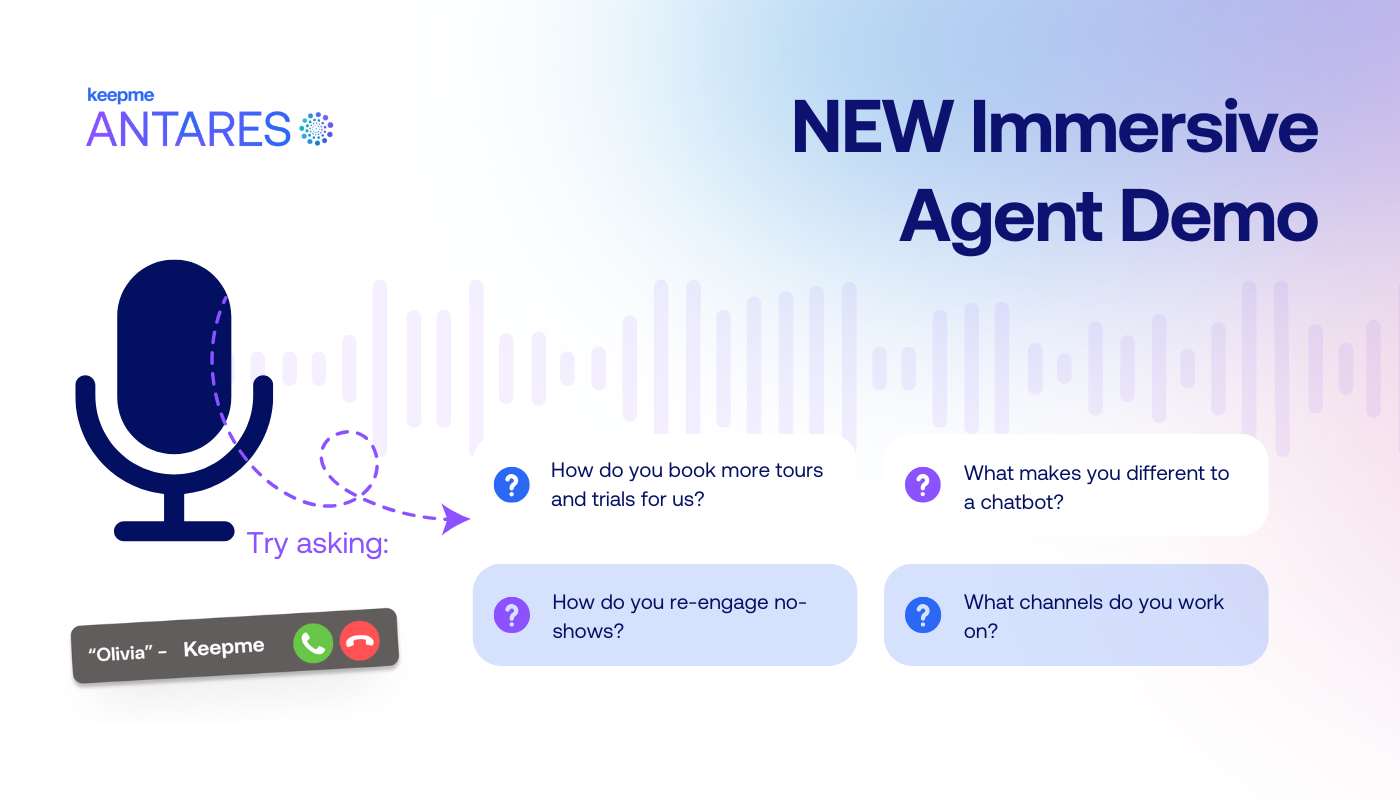Fitness Operators Can Now Experience Antares Live in Their Own Environment
Keepme, the leader in gym sales funnel optimisation for health and fitness operators, today announced the launch of a ground-breaking demo experience that lets fitness professionals engage with its AI Sales Agent, Antares, exactly as their members would - no Zoom calls, slides, or pre-recorded videos required.
Experience Antares in Your World
Rather than scheduling a traditional screen-share, operators who request a demo will immediately be connected to Antares’ AI persona, Olivia, via a live phone call. Within moments of submitting the demo form, Olivia initiates a natural, unscripted conversation - answering questions about Keepme Antares, demonstrating its lead-conversion capabilities, and offering available demo times without any human intervention.
“For multi-site operators, AI Sales Agents are more than a tool - they’re the backbone of the gym sales funnel across every channel and location,” said Matt McCallum, Growth Marketing Manager at Keepme. “By letting prospects experience Antares firsthand, we build confidence through transparency and show exactly how effortlessly our solution handles high-volume, cross-channel lead flows.”
Seamless, End-to-End Interaction
Throughout the demo, operators witness each step of the buyer journey:
Live AI Call – Olivia calls in real time, showcasing her conversational style.
Dynamic Q&A – Ask anything: from technical specs to pricing models, and receive immediate, contextual responses.
Automated Booking – Olivia proposes demo slots and confirms bookings via SMS, WhatsApp, and email - emulating the full customer experience.
Cross-Channel Follow-Up – Receive reminder messages just as gym prospects do, illustrating Antares’ frictionless follow-through.
“Traditional demos often fall short of conveying the true power of AI-powered sales,” noted Hilary McGuckin, Director of Marketing at Keepme. “We built this immersive experience so operators can see - and hear - how Antares converts leads at midnight, in multiple languages, and at scale, all without a human handoff.”
With competition intensifying in the fitness industry, operators need reliable, 24/7 lead engagement. Keepme’s Antares demo experience underscores the platform’s ability to drive bookings and reduce manual workload, empowering fitness chains to focus on delivering exceptional member experiences.
If you’d like to experience Antares for yourself - and see exactly how an AI Sales Agent could grow your membership base - simply complete this form. Within moments, you’ll be in your immersive experience and putting the agent to the test.
About Keepme
Established in 2019, Keepme helps fitness operators drive predictable revenue growth by transforming how they acquire and convert new members. Their AI-powered platforms turn fragmented acquisition efforts into fully automated sales funnels - capturing, engaging, and converting prospects across every channel, in any language, 24/7.
Media Contact:
Hilary McGuckin
Director of Marketing, Keepme
press@keepme.ai
www.keepme.ai

